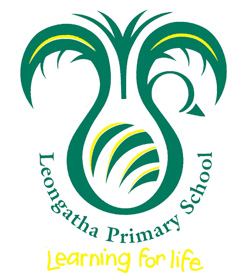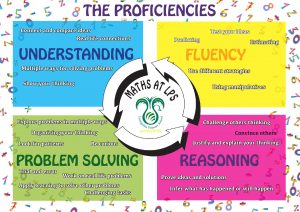Numeracy
At Leongatha Primary School we teach maths through Open Ended Tasks, incorporating the Maths Proficiencies of Fluency, Problem Solving, Reasoning and Understanding. An Open Ended Task is a maths activity where there is more than one way to solve the problem, and often more than one solution. This is where the term ‘Open’ comes from. For example, instead of asking a student what is 3×8 (which is a closed question because it has only one answer of 24), we flip the problem to become ‘the answer is 24, what could the multiplication problem be?’ (this is now an ‘Open Task’ because there is more than one way to solve this problem).
Our school was selected to participate in the ‘Department of Education – Primary Maths Specialist Program’ in 2019/2020. Three teachers from our school were involved in over 200 hours of Professional Development to improve our whole school maths teaching and learning. Research shows that Open Ended Tasks provide students with the opportunity to problem solve, think deeply about a problem and communicate their thinking to peers and teachers, allowing them to develop more in depth understandings.
We recognise that when we provide students with an Open Ended Task, some students might find it a little difficult, whereas some students might be eager for a further challenge. This is where we use Enabler Tasks and Extender Tasks when presenting an Open Ended Task. An Enabler Task is a similar task to the Open Ended Task, but it has been modified slightly to allow an easier entry point. Some students may be required to complete the Enabler Task to help them become more ready to complete the Open Ended Task presented. An Extender task, on the other hand, is an extension task that builds upon the original Open Ended question. So, once a student completes the Open Ended Task, they can be challenged further by completing the Extender Task.
Research shows that offering the maths curriculum using Open Ended Tasks, with both Enablers and Extenders, allows ALL students to find an entry point into the task and then to exit with an increased level of mathematical understanding.
Students use manipulatives (concrete materials like counters, dice or base 10 blocks) from Prep – Grade 6 to support their learning, and are regularly encouraged to explain their mathematical thinking. Students from Grade Prep – 6 benefit from making mathematical models, experimenting with concrete materials as they problem solve.
Teachers collect and use student work samples in order to direct planning, teaching and assessment that is catered to the needs of every student.










 Designed and Developed by Matt Hayward Web Design
Designed and Developed by Matt Hayward Web Design